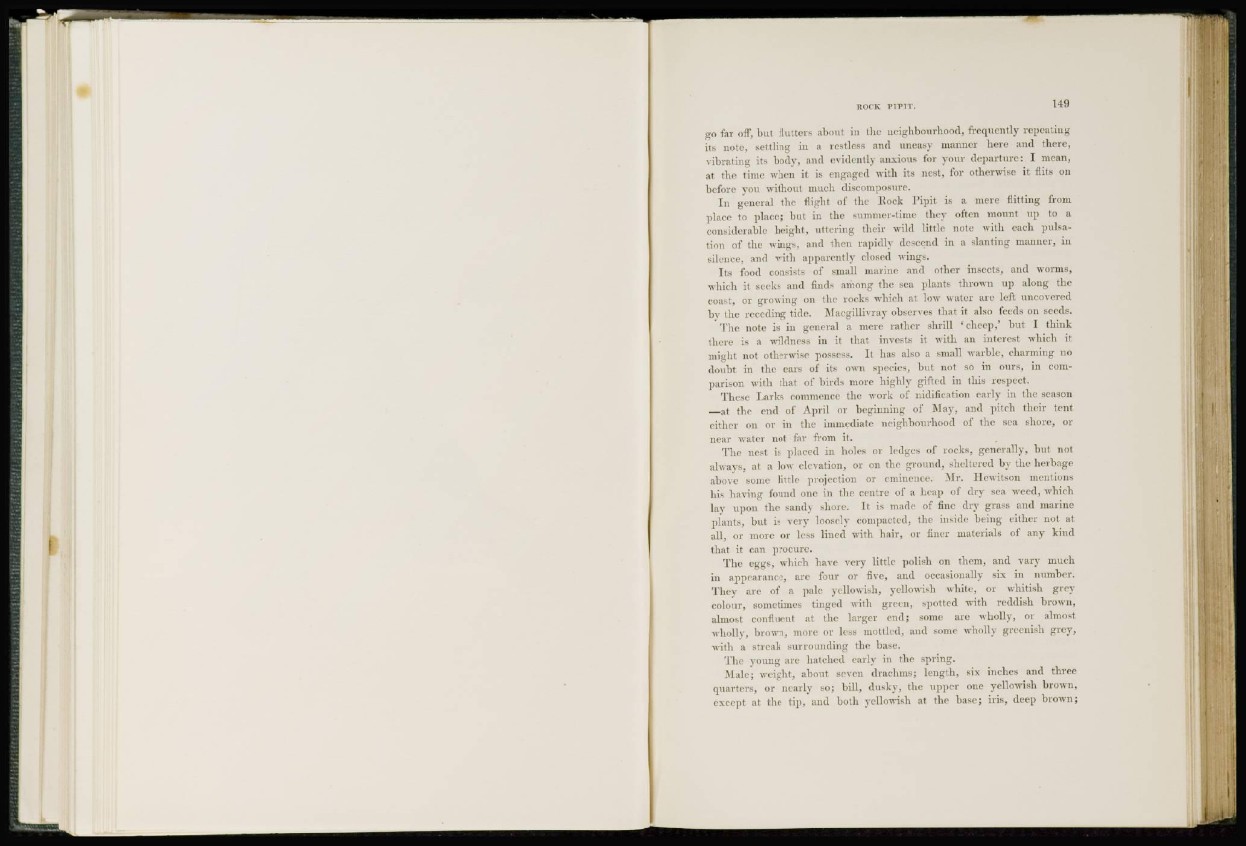
go far off, but flutters about in the neighbourhood, frequently repeating
its note, settling in a restless and uneasy manner here and there,
vibrating its body, and evidently anxious for your departure: I mean,
at the time when it is engaged with its nest, for otherwise it flits on
before you without much discomposure.
In general the flight of the Hock Pipit is a mere flitting from
place to place; but in the summer-time they often mount up to a
considerable height, uttering their wild little note with each pulsation
of the wings, and then rapidly descend in a slanting manner, in
silence, and with apparently closed wings.
Its food consists of small marine and other insects, and worms,
which it seeks and finds among the sea plants thrown up along the
coast, or growing on the rocks which at low water are left uncovered
by the receding tide. Macgillivray observes that it also feeds on seeds.
The note is in general a mere rather shrill 'cheep,' but I think
there is a wildneSB in it that invests it with an interest which it
might not otherwise possess. It has also a small warble, charming no
doubt in the ears of its own species, but not so in ours, in coraparison
with that of birds more highly gifted in this respect.
These Larks commence the work of nidification early ¡11 the season
—at the end of April or beginning of May, and pitch their tent
either on or in the immediate neighbourhood of the sea shore, or
near water not far from it.
The nest is placed in holes or ledges of rocks, generally, but not
always, at a low elevation, or on the ground, sheltered bv the herbage
above some little projection or eminence. Mr. Hewitson mentions
his having found one in the centre of a heap of dry sea weed, which
lay upon the sandy shore. It is made of fine dry grass and marine
plants, but is very loosely compacted, the inside being either not at
all, or more or less lined with hair, or finer materials of any kind
that it can procure.
The eggs, which have very little polish on them, and vary much
in appearance, are four or five, and occasionally six in number.
They are of a pale yellowish, yellowish white, or whitish grey
colour, sometimes tinged with green, spotted with reddish brown,
almost confluent at the larger end; some arc wholly, or almost
wholly, brown, more or less mottled, and some wholh greenish grey,
with a streak surrounding the base.
The young are hatched early in the spring.
Male; weight, about seven drachms; length, six inches and three
quarters, or nearly so; bill, dusky, the upper one yellowish brown,
except at the tip, and both yellowish at the base; iris, deep brown;